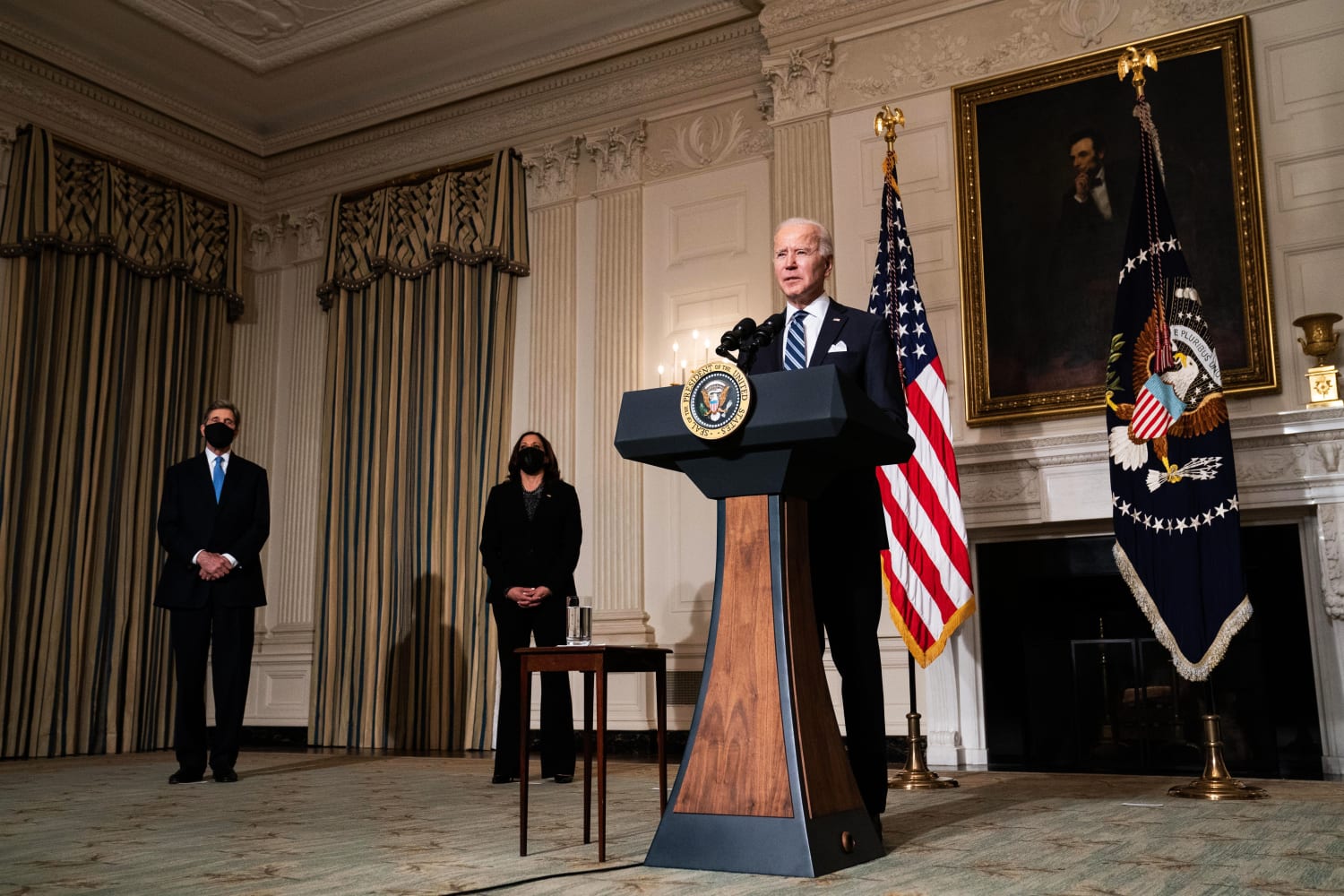WASHINGTON — How low can U.S. emissions go? Under President Joe Biden, the number to watch for may be 50 percent.
As he prepares for a global climate summit next month, a vigorous influence campaign is underway over the president’s forthcoming commitment to the Paris Agreement, with all eyes on whether he will pledge to cut greenhouse gas emissions by more or less than 50 percent by decade’s end.
To keep global temperatures in check, the United Nations says the world must nearly halve emissions by 2030 compared to a decade ago. This year, as Biden returns the U.S. to the Paris deal, an array of environmental groups, elected officials and scientists are backing a U.S. target of no less than 50 percent, a goal the nation is nowhere near on track to meet.
Behind the scenes, some Democrats and European officials are pushing for an ever more aggressive pledge. Yet the administration is getting pushback on the other end from business groups who say 50 percent is unrealistic, especially before Biden can even explain how he’ll get there, according to interviews with nearly a dozen industry officials, lobbyists and congressional aides.
And many Republican lawmakers want him to skip the pledge altogether, arguing he’ll hand Beijing a massive economic advantage by committing to painful cuts while China lets its emissions continue rising.
Sen. John Barrasso, R-Wyo., the Senate Energy and Natural Resources Committee’s top Republican, warned Biden would “set punishing targets for the United States, while our adversaries keep the status quo.”
That reasoning is roundly rejected by scientists and climate activists.
“This is not a moment to hide behind the inaction of other countries,” said Rachel Cleetus of the Union of Concerned Scientists, one of many groups calling for a cut of at least 50 percent.
In his first days in office, Biden committed the U.S. to zeroing out emissions of heat-trapping gases by 2050. But that’s a far-off goal the U.S. will either make or miss long after he’s left office. The more urgent question is how drastically the U.S. will cut emissions short-term.
Under the Paris Agreement, all countries were supposed to declare updated pledges, known as “nationally determined contributions,” for 2030. As of February, 75 parties to the deal had done so.
The White House declined to comment on Biden’s decision. But administration officials said an announcement was expected on or before the global summit of presidents and prime ministers to tackle climate change that Biden announced just after taking office and will host on April 22, which coincides with Earth Day.
Biden and his special envoy for climate, John Kerry, hope to use that virtual summit to increase pressure on other polluters to announce their own ambitious pledges. Not all are invited. Kerry has said the 17 biggest-emitting countries will be, along with vulnerable nations bearing dramatic climate change impacts like Bangladesh and Palau.
Biden’s decision comes as new data shows the pledges to date are “nowhere close to the level of ambition needed” to achieve global goals of limiting global warming to 1.5 degrees Celsius, according to U.N. Secretary-General António Guterres. The combined pledges would produce a cut of less than 1 percent by 2030, the U.N. said. Other recent data show emissions are again climbing after a temporary pandemic dip.
Even at 50 percent, the U.S. would be far from setting the pace. The European Union has pledged at least a 55 percent cut compared to 1990 levels, while the U.K. promised 68 percent.
Climate Action Tracker, an independent scientific group, said this month the U.S. needs to cut 57 percent to 63 percent by 2030 to meet Biden’s goal of zero net emissions by mid-century.
In the U.S., a pledge of 50 percent or more has been embraced by the Environmental Defense Fund, National Resources Defense Council and World Resources Institute, along with the “America Is All In” coalition led by U.N. Special Envoy Mike Bloomberg and Washington Gov. Jay Inslee.
Another looming question: Whether Biden can back up his number with specifics about how he’ll force the needed cuts from the biggest-emitting sectors: transportation, electricity and heavy industry.
White House climate czar Gina McCarthy has been drafting plans, but what’s achievable depends heavily on what Biden can get through Congress, perhaps through infrastructure legislation, a question unlikely to be resolved before the summit.
“There are so many things that have to be put into place from technology to policy to market mechanisms,” said Marty Durbin, senior vice president of policy of the U.S. Chamber of Commerce. “In order to be durable, we’re going to need legislation passed by Congress.”
The American Petroleum Institute, the powerful oil and gas trade association that has tried as of late to rebrand the industry as a positive player on climate change, has endorsed “the ambitions of the Paris Agreement” but declined to say how much the U.S. should cut by 2030.
“The trajectory needs to be one that balances energy security and environmental goals in terms of reducing greenhouse gas emissions, continuing to promote economic growth and maintaining the competitiveness of the United States,” Aaron Padilla, who manages API’s climate policy, said in an interview. “That’s a very delicate balancing act.”
Source: | This article originally belongs to Nbcnews.com











